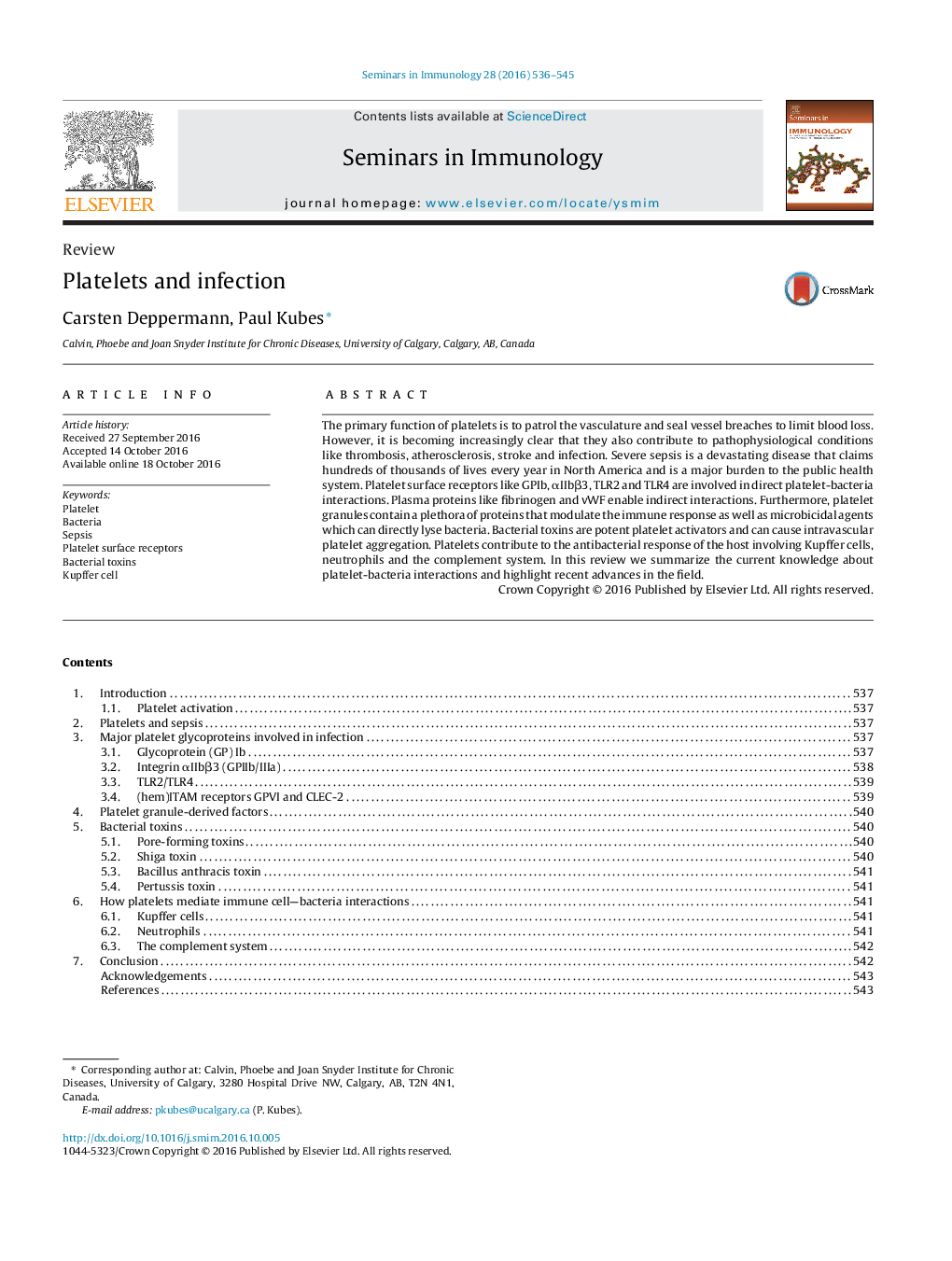| Article ID | Journal | Published Year | Pages | File Type |
|---|---|---|---|---|
| 5670412 | Seminars in Immunology | 2016 | 10 Pages |
â¢Platelets play roles beyond thrombosis and hemostasis, including in infection.â¢Platelet surface receptors mediate direct platelet-bacteria interactions.â¢Plasma proteins facilitate indirect interactions between platelets and bacteria.â¢Bacterial toxins are potent platelet activators.â¢The antibacterial host response involves platelets, Kupffer cells and neutrophils.
The primary function of platelets is to patrol the vasculature and seal vessel breaches to limit blood loss. However, it is becoming increasingly clear that they also contribute to pathophysiological conditions like thrombosis, atherosclerosis, stroke and infection. Severe sepsis is a devastating disease that claims hundreds of thousands of lives every year in North America and is a major burden to the public health system. Platelet surface receptors like GPIb, αIIbβ3, TLR2 and TLR4 are involved in direct platelet-bacteria interactions. Plasma proteins like fibrinogen and vWF enable indirect interactions. Furthermore, platelet granules contain a plethora of proteins that modulate the immune response as well as microbicidal agents which can directly lyse bacteria. Bacterial toxins are potent platelet activators and can cause intravascular platelet aggregation. Platelets contribute to the antibacterial response of the host involving Kupffer cells, neutrophils and the complement system. In this review we summarize the current knowledge about platelet-bacteria interactions and highlight recent advances in the field.
